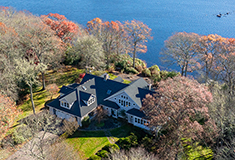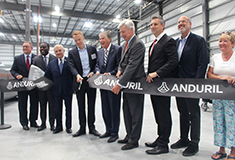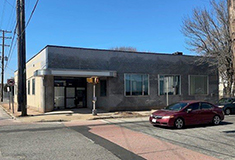Major developments progressing - by William Fazioli

Persistence prevails when all else fails. Despite headwinds and disruptions in the construction industry, several major development projects recently reached milestones in East Providence. These projects include significant residential developments along with important commercial and industrial expansions.
On the residential side, Wampanoag Meadows started vertical construction on the first phase of a 416-unit development. The project is the first investment from Mass.-based Flatley Company in East Providence. The project will consist of eight apartment buildings situated on a 50-acre site of a former gravel pit.
In Rumford, a 142-unit development by AR Builders has also been approved for vertical construction. Located off Newport Ave., the project is conveniently located near southern Mass. which can provide an affordable cost alternative to more expensive housing markets.
In the central part of the city, a 25-unit project has broken ground led by Paragon Investments. These units are being built in proximity to the newly redesigned Henderson Bridge which provides direct access to the east side of Providence.
A common theme of these projects is that they are all taking place on previously vacant land. These underutilized parcels were not only unsightly but generated no positive impact for the community. In fact, their prior dormant conditions devalued neighboring property values.
This new housing inventory will improve the quality of housing options in our city. The current state of the city’s existing stock is old with over 84% of units built prior to 1980 and nearly 40% constructed before 1940.
The revitalization of these properties is the result of intentional polices adopted by East Providence to foster a growing tax base. These parcels languished and were mired by idleness for decades before the city energetically worked with new property owners to move these projects forward.
A recent report issued by leading public policy groups contends that local governments should carefully formulate effective land use policies that provide sustainable revenues to support public services. The report was a collaboration among several professional associations including the American Planning Association, Government Finance Officers Association and the International City Manager’s Association. Its recommendations represent the intersection of planning, economics and public finance that can generate a productive use of available land that supports the local government.
One of the key findings of this research is to promote dense infill development for several reasons. First, this yields higher revenues per acre for a community. Also, infill development does not require new capital investment to accommodate growth but rather relies on existing infrastructure. In addition this development trend promotes pedestrian and transit modes of transportation which has a lower carbon footprint than low density development. Lastly, infill development tends to attract a younger demographic base which will support locally-owned businesses and restaurants.
Encouraging the adaptive reuse of underutilized buildings and the development of vacant parcels along existing city infrastructure will continue to increase the city’s tax base while meeting the need for additional housing units. Making fiscally prudent development decisions will benefit the city for years to come.
William Fazioli is the director of planning & economic development for the city of East Providence, R.I.
Washington Trust named one of healthiest employers in Rhode Island by PBN


Nine Post Rd. receives approval for six units and commercial space - by Frank Picozzi

Warwick offers convenience of city living, but feels like a smaller, close-knit community - by Frank Picozzi

The City of Warwick is the perfect choice - by Frank Picozzi








.png)


.png)